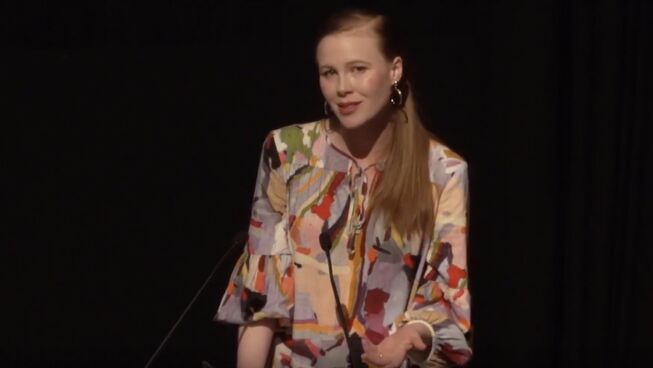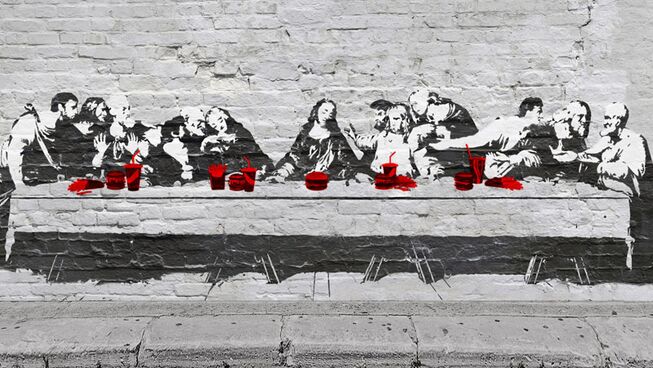The artist is a strange and divisive beast. We artists come with our own mythology, a popular history of bawdy behaviour, addiction, indulgence, vanity, and perpetual unemployment. When I transferred out of my psychological science degree at the age of 19 to pursue conservatory training as an actor, my family of medical professionals was deeply concerned. And I must admit that my intentions were mostly hedonistic. I wanted the experience of full immersion in arts training. Employability, security, stability and service to the rest of humanity were not high on my priority list at that time.
And yet, I learned some things about the human condition in those three years of acting school, and the fraud exposure to emotions and relationships and human storytelling, that I perhaps could not have learned in even seven years of clinical psychology training. I learned about the power of longing and the necessity of conflict and the flammability of hope, the heartbreaking power of comedy, the healing power of tragedy. I learned that humanity might discard every single inheritance from their ancestors over time, but they do not discard story; that what we glean and learn from art runs a deeper than any lecture or research paper or sermon or public service announcement. And of course I learned how to cry on cue, which is arguably one of life's most coveted and useful skills, particularly when you're pulled over by the police.
I have been acting professionally for almost 10 years and I've been writing professionally for five of those years. I make my living and I support my family by telling stories, much to my parents' continued confusion. But whether acting or writing, I invariably tell the same story. There is suffering, a journey behind it, good and evil battling, and an unlikely hero, a blueprint for humanity's own hopes and aches and desires, a narrative where what we truly yearn to be ... wins; where the cold and tired and batted young hero finds his or her heart courage and pushes past their pain and save someone or something or sometimes the whole world. And we tell this story over and over and over again. We tell it to ourselves when we take ourselves to yet another Marvel movie. We tell it to our children when we read them Harry Potter at night, we tell it so that we remember it to be true. My commitment to the craft of telling this age old story is not so much because it's easy – because it's not – or because I'm good at it – because that is arguable – but because I believe in it; because I've learned to consider the practice as worthy, as a service and not an indulgence. And I'd like to invite you into that paradigm as well.
I’m discussing ‘art versus advertising’, and the fascinating parallels this has with our different approaches to the person of Jesus, and other strange and divisive beast ... if I may. The artist, despite their pure and holistic training in beauty and drama and ancient storytelling, is well versed in advertising. Ask any actor, director, or freelancer, and you'll find a certain proportion of all of our work is inevitably made up of selling – be it selling our own art, if we're lucky, or as some people put it, selling out and applying our creativity to other people's products or agendas or campaigns or marketing. Every creative I know longs for the chance to contribute to a story that might shake or nudge or transform even one person, but the reality is ... Subway ads and corporate training videos and drink driving campaigns pay the rent.
We live in a society with limited funding or patronage for pure artistic practice, but with a lot of money for advertising. It can feel a bit dehumanizing. In advertising, the actors are not considered artists, they’re dubbed talent. The writers’ personal voices have no real interest, only to the extent that they can adopt the company's motto. There are clients overseeing every choice. Inanimate products are objects that are given as much screen time as humans and catch phrase is written with only one intention: to convince someone that they are not acquiring enough, doing enough or simply even being enough, and that the product in question will solve that issue.
We all know when we're being sold something and the artist certainly knows when they are selling something, because part of the artist’s strange little soldiers curls up and dies. But our world runs with dependence on the system, and advertising has harnessed the power of public art and storytelling to sell us all our needs, our wants and our dreams. It's genius. Invoke an emotional reaction in someone and their longings will shift to meet the cause of it. Advertising and it's rather serious cousin, propaganda, manipulate our emotions to create a response in the hope that we buy into the concepts that they are offering us.
So, if the dark core of advertising is manipulation, what is the core intention of art and storytelling? Hope? Comfort? Lessons in morality? Fame maybe ... I don’t think so.
I would like to argue that the very heart of artistic practice is provocation. There is no ultimate, contrived or proposed reaction to art. The work might be presented as the artist truth, perspective or opinion, but its intention is inclusion, not persuasion. There is often very little or no cost to view art, particularly if presented publicly, but fascinatingly, our mere observation of the installation or performance or piece pulls us into becoming part of that artwork. Art is available to all and we are invited in, provoked and given agency to respond. We don’t have to like it. We don’t have to embrace it. Negative responses are just as welcome as positive ones, but this does not acquit us. All reactions are interactions and we are participants, not just observers.
The aim of art is not applause, though applause feels nice. The aim is provocation, a nudge, a transformation, a question. In pure artistic practice, no matter what the ego involved, the artist has not created the art for its saleability, or power, but for its integrity of expression, for its honesty, for the joyful practice or the deep challenge or audacious authenticity of making something like that.
The artist creates space for a new perspective but does not dictate what that perspective should be. They invite an eternal reaction instead of the advertiser's call to external action. They produce beauty for the very sake of beauty, not for the way beauty might intoxicate or titillate or influence us. They produce what is ugly too, because they are free to do so. The artist is a provocateur, a curator or creator of thought, perspective, response, wonder and beauty; a truth-teller, no matter the fiction on offer. Truth and fact are not the same things. Truth does not contradict or deny facts, but it goes through and beyond facts. This is something that is very difficult for some people to understand. Truth can be dangerous.
So, based on these definitions, how on earth do we approach the subject of Christianity? I have no doubt that many people, Christian, atheist, or otherwise, have encountered the propaganda or manipulation of Christianity. I say this in love, but I think for a long time Jesus has been presented as both the advertising guru and the product. The Bible is publicly condemned as a persuasive and dictating text, which serves as religious advertising material, and evangelicals as pyramid scheme recruiters happily offering the Kool-aid.
On a small, almost benign scale, the white and western church sometimes sells Jesus like Tupperware. The logic being this: I love my Tupperware and if my friends buy Tupperware too, I get rewarded by the company, and if their friends by the Jesus Tupperware, I collect more rewards including power and influence. Great! And that's the catch. When you're selling something, what you're really trying to acquire is power, and the acquisition of power is what I believe to be the antithesis of both true Christianity and art. It goes deeper than Tupperware, however. Western evangelicalism can look like big corporate advertising campaigns, billboards at stadiums, 30 second ads that attempt to make us feel moved or guilty or amused, or to get us on side, to get our vote, to get our investment, to collect us like numbers.
The fallacy gets deeper and darker. Christians, believe they must hold up their loyalty to Jesus, the same way we've seen political propaganda, colonialism and fear campaigns on a national and international scale. And as your local ragamuffin artist, who converted to faith much later in life, I'm here to challenge that approach and that fallacy and the global presumption that Jesus, the advertising guru, is as far as we need to go in understanding the mystery of Christianity. You see... not unlike art. The kingdom of God cannot simply be bought and sold. It must be exhibited, not advertised. It must have an audience, not a customer. Faith in God is a process of creativity, not business.
--------------
This blog is an abridged version of the talk by Anna McGahan at the 2019 Smith Lecture. Scroll down to access the video of the full talk.




